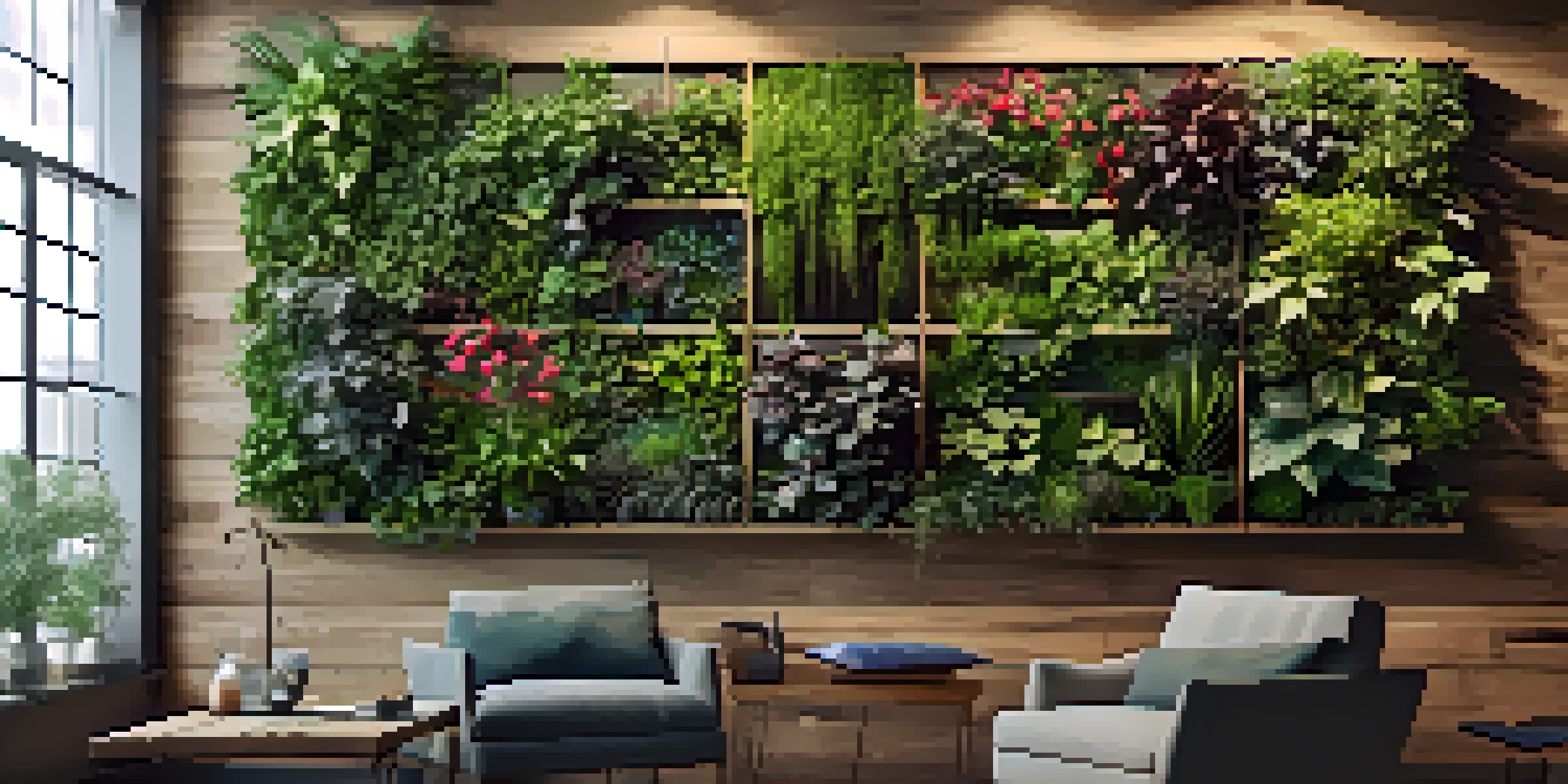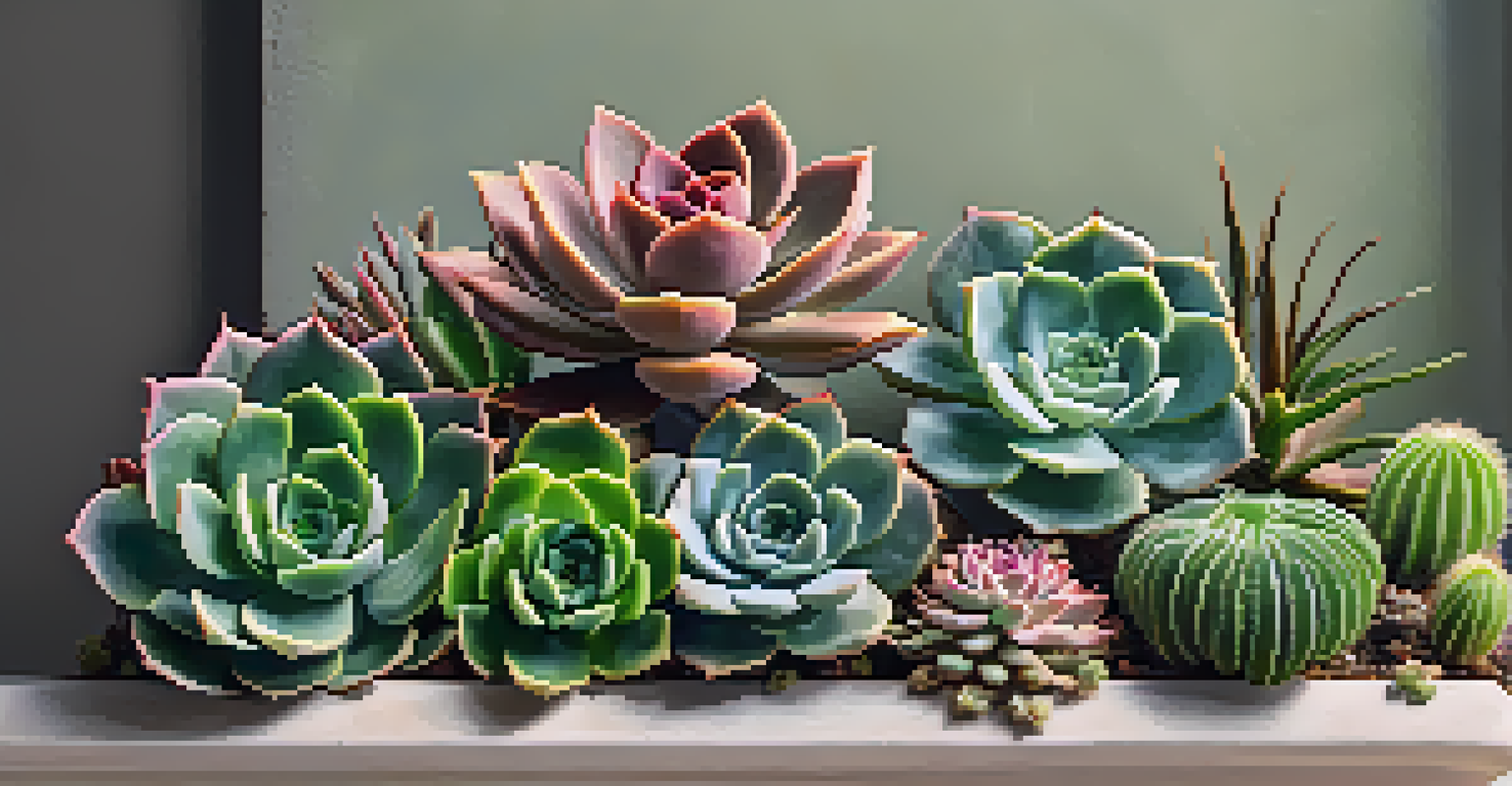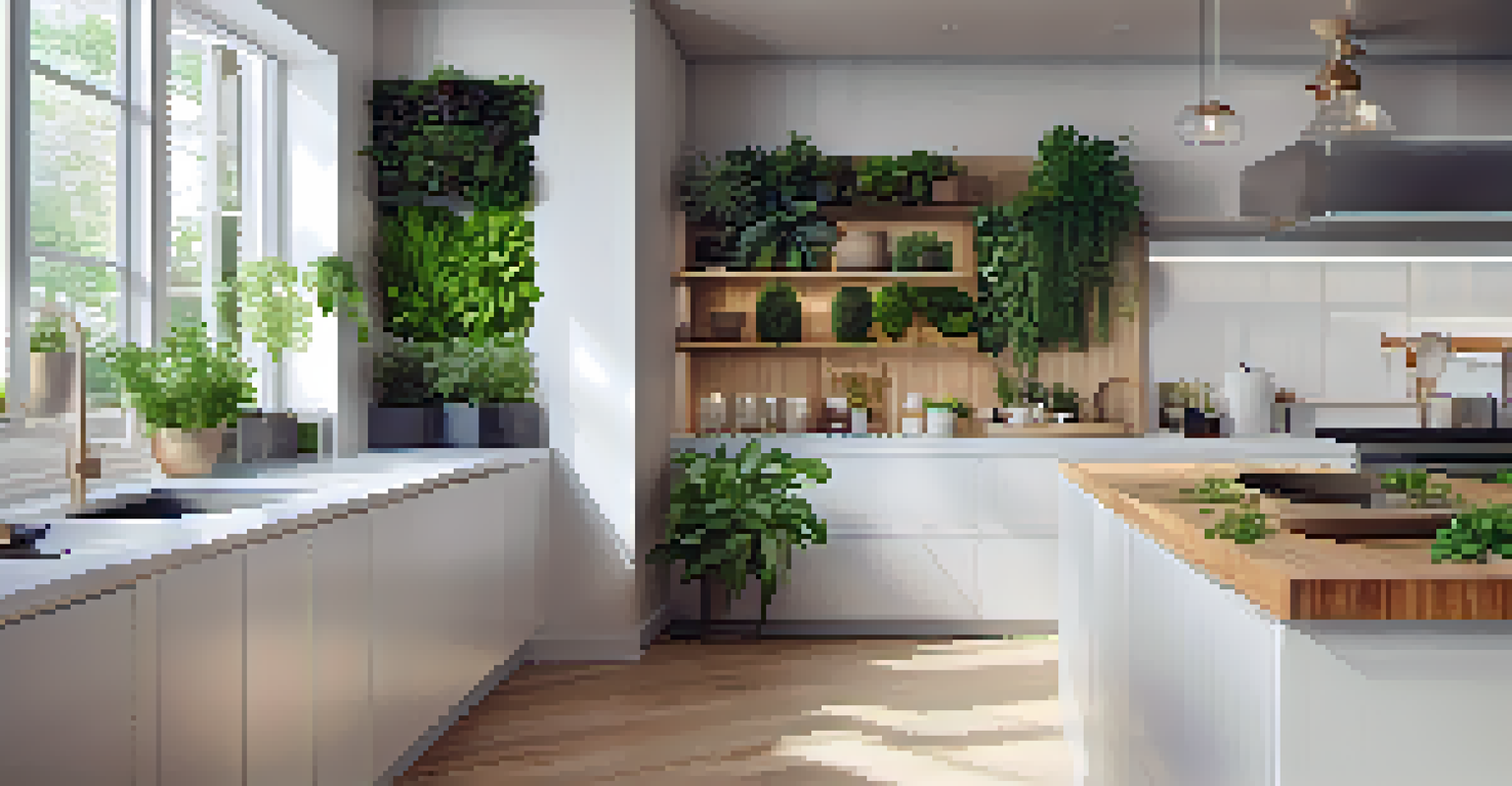How to Create a Vertical Garden Indoors for Space Saving

Understanding Vertical Gardens and Their Benefits
Vertical gardens, also known as living walls, are a creative way to incorporate greenery into your home without taking up much space. They can enhance air quality, reduce noise, and even add a unique aesthetic to your interiors. Imagine transforming a bare wall into a lush, vibrant display that brings the beauty of nature indoors.
Gardening adds years to your life and life to your years.
These gardens are particularly beneficial for those living in apartments or homes with limited outdoor space. By going vertical, you can grow a variety of plants, from herbs to flowers, without needing a traditional garden plot. This not only maximizes your available space but also allows for a more diverse plant selection.
Additionally, indoor vertical gardens can improve your mental well-being. Studies suggest that having plants around can reduce stress and enhance mood. So, not only will you be beautifying your space, but you’ll also be cultivating a little slice of tranquility.
Choosing the Right Location for Your Vertical Garden
Selecting the ideal spot for your vertical garden is crucial for its success. Look for an area that receives ample natural light, as most plants thrive in bright environments. A south-facing wall typically provides the best sunlight exposure, but be mindful of any obstructions that might cast shadows.

Consider the indoor climate of your chosen location. Spaces with consistent temperature and humidity levels are more conducive to plant growth. Avoid areas with extreme heat from appliances or cold drafts from windows, as these can stress your plants and hinder their development.
Vertical Gardens Enhance Living Spaces
Vertical gardens bring greenery indoors, improving air quality and aesthetics while making the most of limited space.
Lastly, think about accessibility. You’ll want to ensure you can easily reach your vertical garden for watering, pruning, and maintenance. A convenient location will help you enjoy your garden more and keep it thriving without much hassle.
Selecting the Right Plants for Your Indoor Garden
When it comes to choosing plants for your vertical garden, opt for varieties that are well-suited for indoor environments. Herbs like basil and mint not only look great but are also practical for your kitchen. Additionally, leafy greens such as spinach and lettuce can thrive in vertical setups and provide fresh produce right at your fingertips.
The greatness of a nation and its moral progress can be judged by the way its animals are treated.
Consider incorporating succulents and air plants, which require less maintenance and can tolerate various light conditions. These plants can also add texture and visual interest to your garden. Just remember to mix plant sizes and shapes for a more dynamic look.
Lastly, don't forget about the aesthetics. Choose plants with varying colors and patterns to create an eye-catching display. This variety will make your vertical garden not just a practical addition, but also a stunning focal point in your home.
Materials Needed for Your Vertical Garden
Before you start building your vertical garden, gather the necessary materials. You’ll need a sturdy frame or planter that can support the weight of your plants and soil. Options include wooden pallets, wall-mounted planters, or even repurposed shoe organizers. Each option offers a unique look and functionality.
Next, consider the growing medium. While soil is the most common choice, you could also use hydroponic systems or other soilless mediums for specific plants. These alternatives can be particularly beneficial for herbs and leafy greens, as they often promote faster growth and healthier plants.
Care and Maintenance are Key
Regular watering, fertilizing, and pest monitoring are essential practices to ensure a thriving vertical garden.
Lastly, don’t forget about tools for maintenance. A watering can, pruning shears, and soil moisture meter will help you care for your vertical garden effectively. Having the right tools handy ensures that your green space remains vibrant and healthy.
Building Your Vertical Garden: Step-by-Step Guide
To start building your vertical garden, first, decide on the structure you’ll use. If you’re using a pallet, ensure it’s clean and free of chemicals. If you’re opting for wall-mounted planters, secure them to the wall according to the manufacturer’s instructions to ensure they can hold the weight of the soil and plants.
Next, fill your chosen structure with the growing medium. If using soil, leave some space at the top to prevent it from spilling out when watering. For hydroponic systems, follow the setup instructions carefully to ensure proper water flow and drainage.
Once your structure is ready, start planting! Place your chosen plants in the growing medium, ensuring they have enough space to grow. Water them lightly and place your vertical garden in the chosen location, making adjustments as necessary to optimize light exposure.
Caring for Your Vertical Garden: Tips and Tricks
Caring for your vertical garden involves regular watering, fertilizing, and pruning. Most indoor plants prefer their soil to dry out slightly between waterings, so check the moisture level before adding more water. A simple finger test can help you gauge when it’s time to water again.
Fertilizing your plants every few weeks can provide them with the nutrients they need to flourish. Choose a balanced liquid fertilizer and follow the package instructions for proper dilution. Remember, too much fertilizer can harm your plants, so moderation is key.
Enjoy Fresh Produce at Home
Having a vertical garden allows you to grow fresh herbs and vegetables, promoting healthier cooking and eating habits.
Lastly, keep an eye out for pests and diseases. Regularly inspecting your plants can help you catch any issues early on. If you notice any signs of trouble, such as yellowing leaves or tiny insects, take action promptly to protect your indoor garden.
Enjoying the Benefits of Your Indoor Vertical Garden
Once your vertical garden is established, take a moment to appreciate your efforts. Enjoy the visual appeal of your lush wall of greenery, which can serve as a beautiful backdrop for your living space. It’s amazing how a bit of nature can transform a room and create a calming atmosphere.
Beyond aesthetics, you’ll also reap the benefits of having fresh herbs and vegetables at your fingertips. Imagine cooking with freshly picked basil or adding a sprinkle of homegrown microgreens to your meals. This not only enhances your dishes but also promotes healthier eating habits.

Finally, consider the joy of nurturing your plants. Gardening can be a rewarding hobby that offers a sense of accomplishment. As you care for your vertical garden, you’ll connect with nature, reduce stress, and create a peaceful retreat within your own home.